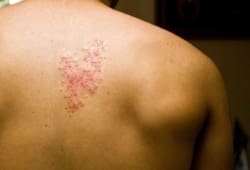
Doctors’ Notes
Real stories by real family physicians
There are simple ways you can ease mild reactions to a bee sting and avoid getting stung again.
Unless you are allergic to the venom of bees, wasps, or hornets, you probably won’t need to see your family doctor if you get stung. A sting will be painful and annoying, but otherwise pretty harmless. Most of my patients only have mild reactions at the site of a sting from a bee, wasp, or hornet. These can include:
- Sharp, burning pain
- Redness and a warm feeling
- Mild swelling
- Itching
Recently, my patient Marie (not her real name) called my office from a playground because her 4-year-old son Henry (not his real name) had just been stung by a bee. Marie said this was his first bee sting. Henry cried when he was stung because it was painful, but he had calmed down after several minutes. He was playing while his mom spoke to me on the phone.
Marie told me that Henry’s left forearm looked red and slightly swollen at the site of the sting. I asked her if he was having any of the following reactions:
- Redness beyond the site of the sting
- Itching beyond the site of the sting
- Hives
- Trouble breathing
- Swelling of his lips or tongue
She said that Henry didn’t seem to have any of these symptoms. I told Marie that she didn’t need to bring him in for an office visit since he was not having an allergic reaction to the bee sting. Then, I explained the following steps to remove the bee’s stinger from Henry’s arm as soon as possible:
- If the stinger is still in the skin, gently scrape it away with a clean fingernail, a piece of gauze, or a straight-edged object (for example, a credit card).
- Wash the area gently with soap and warm water.
- Apply an antibiotic ointment and a dry bandage.
- Use ice (wrapped in a cloth) or a cold compress to reduce swelling at the site of the sting.
Since Henry is older than 2 years of age, Marie could give him an over-the-counter (OTC) oral antihistamine to help ease itching and swelling at the site of the sting. I also told Marie that if Henry’s arm kept hurting, she could give him an OTC children’s pain medicine, such as ibuprofen (one brand name: Children’s Motrin) or acetaminophen (one brand name: Children’s Tylenol). I reminded Marie to read the label carefully and follow the dosage recommendations for Henry’s age and weight if she gave him any OTC medicine.
I also gave Marie instructions to call my office if Henry’s symptoms from the bee sting didn’t go away after a few days or got worse. She agreed and thanked me for my help before ending the call.
Fortunately, Henry just had a mild reaction to the bee sting. But a small percentage of people have a severe allergy to the venom of bees, wasps, or hornets. For them, a sting can cause a life-threatening allergic reaction called anaphylaxis. Anaphylaxis requires immediate medical attention.
Learn more about the symptoms of anaphylaxis, how to treat it, and how to prevent it. If this rare reaction happens, you should call 911 right away.
Quick Tip
To avoid being stung by a bee, wasp, or hornet, remember these do’s and don’ts:
- Don’t use perfume or cologne, especially if it has a fruity or floral scent.
- Don’t use scented hair or body products.
- Don’t wear brightly colored clothing while outdoors.
- Don’t disturb insect nests or hives.
- Do wear closed-toed shoes when you’re walking outdoors.
- Do keep food and drinks tightly covered when you’re eating outdoors. Some stinging insects like to crawl inside straws and open cans or bottles.
- Do stay away from open trash containers outdoors. Toss your garbage in and then move away quickly.
- Do move slowly and quietly away from areas where you see bees, wasps, or hornets.
![]()
Copyright © American Academy of Family Physicians
This information provides a general overview and may not apply to everyone. Talk to your family doctor to find out if this information applies to you and to get more information on this subject.







